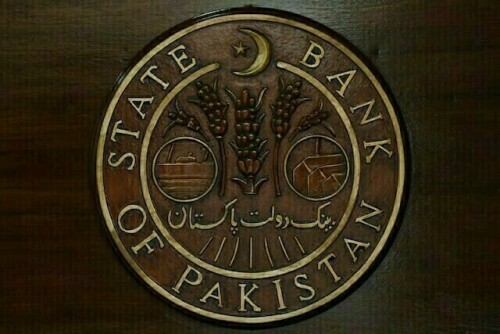State Bank of Pakistan Maintains Policy Rate at 11%
The Monetary Policy Committee (MPC) of the State Bank of Pakistan (SBP) announced on Wednesday its decision to hold the policy rate steady at 11%.
“The MPC has resolved to keep the policy rate at 11%,” stated SBP Governor Jameel Ahmad during a press briefing.
This decision contrasts with market forecasts, which had largely anticipated a reduction in the rate by approximately 50 to 100 basis points (bps).
The committee highlighted that inflation experienced a slowdown in June 2025, reaching 3.2% year-on-year, primarily driven by a decrease in food prices. Core inflation also saw a slight decline.
“However, the committee pointed out that the inflation outlook has somewhat deteriorated following larger-than-expected adjustments to energy prices, particularly gas tariffs,” the MPC statement indicated.
“Nevertheless, inflation is still projected to stabilize within the target range going forward.
“Furthermore, economic activity is gaining momentum, influenced by the continuing effects of previous policy rate reductions.”
The committee anticipates that the trade deficit will probably expand in FY26 as economic activity increases and global commerce slows.
“Considering this macroeconomic perspective and the potential risks, the MPC deemed today’s decision essential to ensure price stability,” the statement added.
The MPC highlighted the following significant developments since its prior meeting:
- Firstly, the SBP’s FX reserves exceeded $14 billion, supported by enhanced financial inflows and a current account surplus.
- Secondly, Pakistan’s recent sovereign credit rating upgrade led to lower Eurobond yields and tighter CDS spreads in international markets.
- Thirdly, recent sentiment surveys showed a slight increase in inflation expectations among consumers but a decrease among businesses.
- Fourthly, FBR tax revenue for FY25 reached Rs11.7 trillion, falling approximately Rs200 billion short of the revised estimate.
- Lastly, global oil prices remained unstable, while metal prices increased. Simultaneously, uncertainty surrounding the impact of global trade tariffs has prompted central banks to maintain a cautious monetary policy approach.
“Considering these developments and possible risks, the committee determined that the real policy rate should remain adequately positive to stabilize inflation within the target range of 5–7%,” the statement conveyed.
The MPC stressed the importance of maintaining the current prudent monetary and fiscal policy mix to sustain macroeconomic stability. The committee also reiterated its belief that achieving higher growth sustainably would be challenging without structural reforms.
Inflation Outlook
The MPC anticipates that energy inflation will likely rise from current levels due to significant upward adjustments in gas tariffs, the phasing out of temporary electricity tariff reductions (for Q4-FY25), and recent increases in motor fuel prices.
“The MPC noted that year-on-year inflation is expected to primarily remain within the 5–7% range in FY26, although it may exceed the upper limit in certain months.
“The MPC emphasized that this outlook is subject to several risks arising from unpredictable global commodity prices and trade prospects, unexpected changes in administered energy prices, and potential widespread flooding,” it stated.
During the press conference, the Governor of the SBP revealed that average headline inflation for the last fiscal year was 4.5%, slightly below the target range of 5–7%.
“Food inflation has significantly decreased, and core inflation has also declined,” he added.
Regarding the external account, the SBP chief mentioned that Pakistan’s imports rose substantially from $53 billion in FY24 to $59.1 billion in FY25, representing an 11.1% increase. “Our non-oil imports have increased by 16%, indicating broad-based growth in imports.”
“However, the rise in the country’s exports remains relatively modest compared to remittances,” Ahmad noted.
Market Expectations
During its prior meeting on June 16, 2025, the MPC also decided to maintain the policy rate at 11%, citing expectations of rising inflation in the months ahead.
However, market analysts had anticipated the central bank to reduce the policy rate by a minimum of 50 basis points (bps) during today’s meeting.
“We anticipate the central bank to announce a 50bps cut in the upcoming MPC meeting,” Topline Securities had stated in a previous report.
The brokerage firm believed the SBP had scope for approximately a 100bps cut, expecting inflation in FY26 to average between 5-7%, resulting in a real rate of 400-600bps.
Analysts at Arif Habib Limited (AHL) had also projected the MPC to decrease the policy rate to 10.5%.
“With inflation declining, the external position currently manageable, and yields already trending downward, conditions seem favorable for further monetary easing, although some risks loom,” AHL commented.
Similarly, a survey indicated that the SBP would reduce the rate by 50bps to 10.5%, with a unanimous forecast for further easing as inflation moderates and external balances improve.
Ahmed Mobeen, Senior Economist at S&P Global Market Intelligence, suggested that the SBP would probably continue cutting rates but might adopt a more “cautious” approach in the second half of the year due to rising import demand and global commodity risks.
Previous MPC Meeting
During its June meeting, the MPC maintained the policy rate at 11%, aligning with market expectations.
At that time, the committee observed that the increase in inflation during May to 3.5% year-on-year (y/y) was consistent with its expectations, while core inflation saw a slight decrease.
“Going forward, inflation is projected to trend upward and stabilize within the target range during FY26,” it stated.
The MPC also evaluated that economic growth was gradually increasing and was expected to gain further momentum in the coming year, supported by the ongoing effects of earlier policy rate cuts.
Since the previous MPC meeting, several significant economic developments have transpired.
The rupee has appreciated by 0.04%, while petrol prices have increased by 5.3%.
Internationally, oil prices have decreased by nearly 4% since the last MPC, hovering around $69 per barrel.
Pakistan’s headline inflation registered at 3.2% on a year-on-year (YoY) basis in June 2025, a reading lower than that of May 2025, when it stood at 3.5%, data indicated.
Moreover, Pakistan’s current account (C/A) posted a substantial surplus of $2.1 billion during the fiscal year (FY) 2024-25, a sharp contrast to the $2.07 billion deficit recorded in FY24, data revealed .
Foreign exchange reserves held by the SBP decreased by $69 million on a weekly basis, registering at $14.46 billion as of July 18.
Total liquid foreign reserves held by the country amounted to $19.92 billion. Net foreign reserves held by commercial banks stood at $5.46 billion.


Comments (0)
No comments yet. Be the first to comment!
Leave a Comment